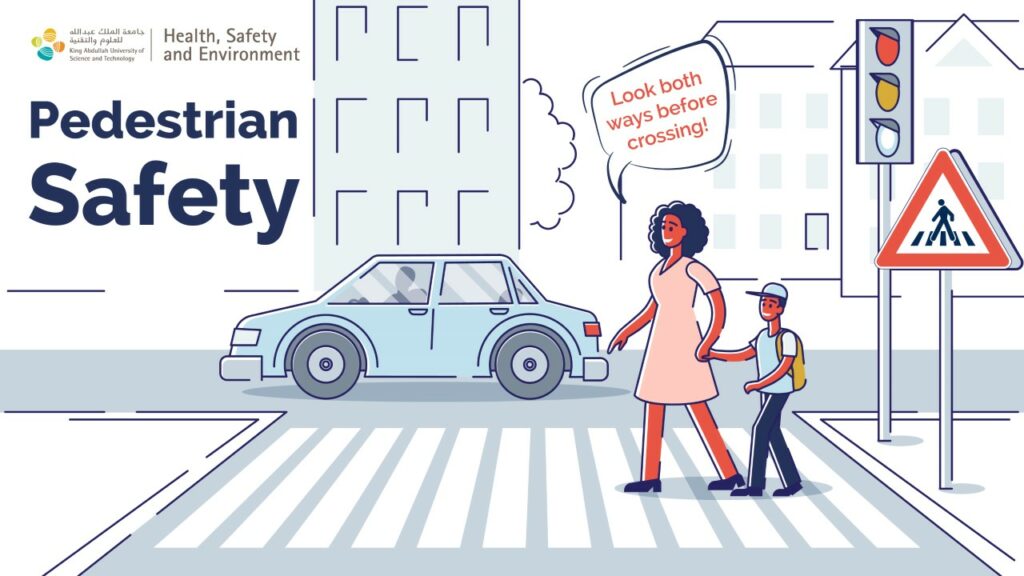
Everyone is a pedestrian
At some point in the day, everyone is a pedestrian. A pedestrian is a person on foot or using a conveyance propelled by human power (skates, skateboard) other than a bicycle. Pedestrians include people with disabilities who use powered devices like self-propelled wheelchairs, tricycles, or quad bicycles. People walk for many different reasons, including relaxation and exercise, and the benefits of walking extend beyond personal and physical benefits to environmental benefits, that can lead to healthier, quieter and safer streets. In addition, walking can help improve overall health, and many adults include walking as part of a physically active lifestyle1. KAUST is committed to ensuring the health and safety of all people who live and work at KAUST. In support of the Traffic and Vehicle Safety Policy, the following safety tips are provided to the University community to promote safe walking.
For pedestrians
- Avoid distracted walking and be aware of your surroundings. Don’t walk and text or talk on the phone; if you need to text, move out of the way of others and stop on the sidewalk to text where it is safe.
- Before crossing, follow the KAUST Cross Code: Stop, look and listen. Look both ways, and check that there is no traffic before crossing the road. Click here to learn more about crossing roads safely.
- Be visible to other road users by wearing light colored and high-visibility reflective clothing.
- Never assume that you have been seen – many disturbances might attract the motorist’s attention, including a low sun in the early morning or late afternoon.
- Watch out – make eye contact to be sure car drivers and riders of e-scooters and bikes can see you!
- Do not walk and stop halfway across the road – remain beside the road until both lanes are clear for you to cross safely.
For drivers
- Don’t speed in KAUST. Remember, a slower speed is a safer speed.
- Drive extra carefully in neighborhoods, schools, and anywhere pedestrians might be and use extra caution when driving in hard-to-see conditions, such as night-time or bad weather.
- When driving, stay focused. Put down your phone. Slow your speed. Yield to pedestrians.
- From dusk to dawn and in other circumstances when visibility is inadequate (e.g., during bad weather), drivers must use vehicle headlamps to increase their visibility.
- Before reversing, ensure visibility and clear vision. Check side-to-side clearance, and scan around the vehicle for hazards and obstructions. Watch out for pedestrians, especially small children.
- If your vehicle is fitted with technologies, like backup cameras, blind spot detection, forward collision warning, and automatic emergency braking systems, use these features to keep pedestrians safe.
- Enter and exit driveways carefully. Watch out for pedestrians, especially small children.
Please watch this short video on Walking Safely
(Source: United States Department of Transportation)
Walk safely, and thank you for Keeping KAUST Safe!
For questions or comments, please contact hse@kaust.edu.sa
References
1 CDC VitalSigns – More People Walk to Better Health. (2013, August 6). Centers for Disease Control and Prevention. https://www.cdc.gov/vitalsigns/walking/index.html
